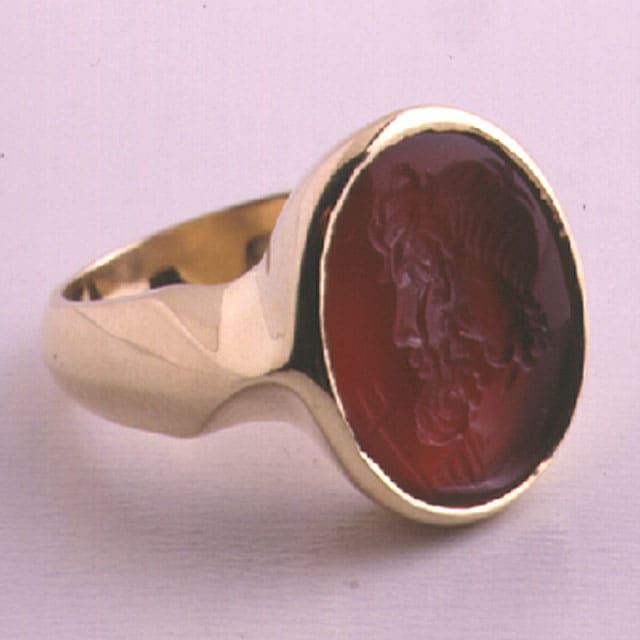Roman Intaglio Depicting Neptune, 1 CE - 300 CE
Carnelian, Gold
FJ.6475
The art of glyptics, or carving on colored precious stones, is probably one of the oldest known to humanity. Intaglios, gems with an incised design, were made as early as...
The art of glyptics, or carving on colored precious stones, is probably one of the oldest known to humanity. Intaglios, gems with an incised design, were made as early as the fourth and third millennia BC in Mesopotamia and Aegean Islands. They display a virtuosity of execution that suggests an old and stable tradition rooted in the earliest centuries. The tools required for carving gems were simple: a wheel with a belt-drive and a set of drills. Abrasives were necessary since the minerals used were too hard for a metal edge. A special difficulty of engraving intaglios, aside from their miniature size, was that the master had to work with a mirror image in mind. In order to explain the capricious acts of nature and man, the Greeks created a vast array of deities possessing many human attributes. Unpredictability is the key to the behavior of the Olympian gods, just as the sea is an uncertain element even to the most experienced sailor. As god of the oceans Poseidon could command waves, provoke storms and cause landslides with the flourish of his trident. On this very handsome intaglio he is seen facing left, with curled beard and hair, wearing a sort of cap decorated with stripes. His trademark trident is visible over his right shoulder. Both the ancient Greeks and Romans seemed more concerned to placate their gods than to venerate them; and in this context we might imagine a wealthy merchant owning this intaglio, perhaps wearing it on his voyages to appease the wrath of the great sea god Poseidon.
